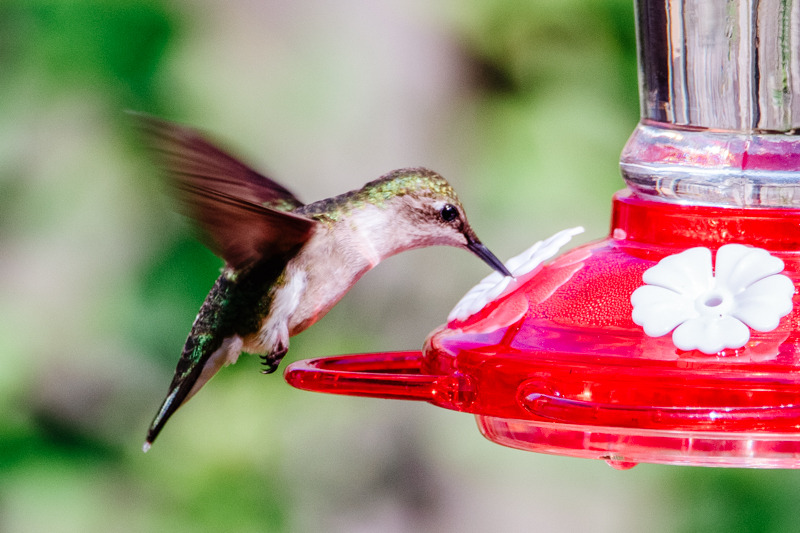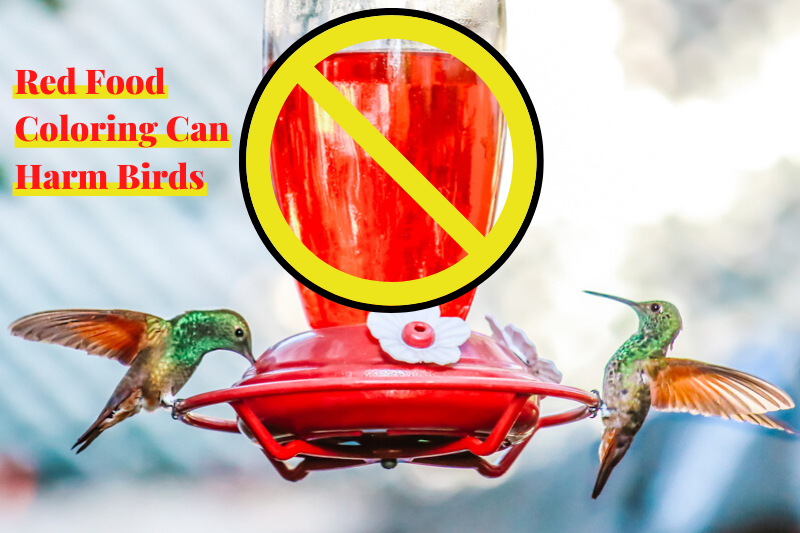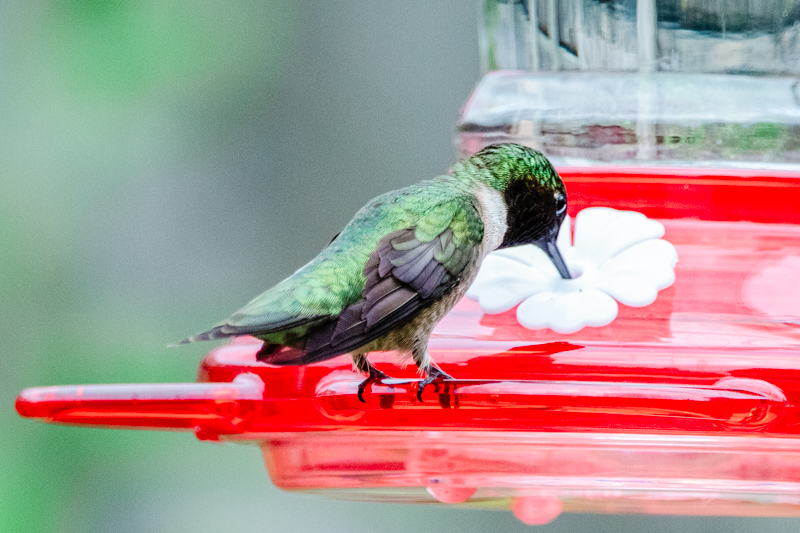Hummingbird Food Recipe (Won’t Harm Birds)


We recently added a hummingbird feeder to our back patio and love it! I highly suggest getting oneâand making your own food with this hummingbird food recipe while you’re at it.
Making your own hummingbird food will save you a ton of money (like 98% savings, see below!) because the stuff that you buy at the garden store is just simple syrup (aka sugar water).
When we bought ours at the checkout line, I grabbed a liter of “hummingbird food” for 10 bucks to get it started right away. When we got home, I noticed the ingredients were just sugar and water. With his expert cocktail-making skills, my boyfriend tasted it and said, “Yep, that’s just simple syrup.”
Whoops.
Now we know. There’s absolutely no reason to spend $10 on hummingbird food when you can make the same thing at home for around 25 cents! That’s almost a 98% markup! Geesh. Now, we make it ourselves for a tiny fraction of the cost.
Hummingbird Food Recipe (Won’t Harm Birds)
To make perfect hummingbird food that will attract hummingbirds but won’t harm them, simply combine 1 cup of white sugar into 3-4 cups of boiling water. Remove from heat, let the sugar dissolve, and bring the mixture to room temperature. Voila! The perfect homemade hummingbird food recipe.
Be sure to read below for what NOT to do, and print the recipe below or bookmark this page to remember it.
If you’ve followed me for a while, you might be wondering why I’m blogging about a hummingbird food recipe. Well, my grandmother’s favorite animal was the hummingbirdâshe even had a tiny one especially laser etched onto the lens of her big glasses.
I have fond memories of having chats with her with that little hummingbird next to her eye. She passed almost 12 years ago, but even now, whenever we see a hummingbird, one of my sisters will remark, “Hey, there’s Grandma Helen coming to say hi to us.” So yes, hummingbirds are special to me ð
What You Should Know About Homemade Hummingbird Food
1. Do NOT add Dye or Food Coloring to Hummingbird Food
Back in the day, people used to add red food coloring to hummingbird food to mimic the color of a flower. However, not only is this an unnecessary expense, it can harm the birds. Do not add any type of coloring to your hummingbird food. Most hummingbird feeders contain some type of red flower decoration which is perfect! We have a clear glass feeder with red flowers and get a ton of hummingbird visitors.

2. Only use white cane sugarâ(No honey or other types of sugar)
Unlike humans, the nutrients in sugars can harm birds. For that reason, do not use honey, raw or turbinado sugar, brown sugar, molasses, or powdered sugar (it contains corn starch). The only thing you should use is straight-up white sugar (aka cane sugar). If it has any color at all, it still has too many nutrients in it (I know! The exact opposite of the advice I give humans ð ). This is the one time I’ll tell you to only use white sugar.
3. Use small quantities and clean your feeder often
Homemade hummingbird food is basically a version of simple syrup and will keep in your refrigerator for two weeks. Since this is just sugar water, it can mold in hot weather. And, hot water sitting outside is just asking for trouble in large quantities. We fill our feeder with 1-2 cups of water every 10 days or so (or when it’s low). Also, be sure to wash your feeder with soap and water every month or so to prevent it from getting sticky or moldy.
4. Watch for mold
Keep an eye on your feeder for mold. You don’t have to obsess about this, and it will honestly depend on your climate. Just stay mindful that this is sugar water sitting outside. Check it in the fridge before you use it, and take a look at the water in your feeder often. If you ever see mold (it will probably be grey-ish), dump the sugar water and clean the feeder with hot soapy water. Then fill again. We’ve had ours for months and never noticed mold (I live in Seattle, again, it will depend on your climate.

Is this Homemade Hummingbird Food Safe for birds?
Yes! A feeder with hummingbird food like this recipe below is perfectly safe.
It’s not true that they become “addicted” or that it’s their only source of food. Hummingbirds will still feed on the nectar of plants and go about their business as usual. Food like this just lets them stop by for a safe visit.
Description
This easy homemade hummingbird food recipe is super simple to make and won’t harm hummingbirds. In fact, they love it! Add it to an attractive hummingbird feeder at least 4 feet off the ground and away from bird’s nests. Your patio is a great place to put it.
- 4 cups of filtered water
- 1 cup cane sugar (aka plain white sugarâdo NOT use any other sugar)*(Never add food coloring to hummingbird foodâit can harm birds.)
- Boil the water. Remove from heat. Stir in the sugar and let it sit for a minute until it dissolves. Stir it again to make the sugar water uniform (the sugar should be completely dissolved.)
- Let your new hummingbird food cool to room temperature. Add it to your hummingbird feeder.
- Store the rest in an airtight glass container in your refrigerator up to two weeks.
Notes
*Only use white cane sugar. No honey, powdered sugar, turbinado sugar, or any other sugar as they may contain concentrated plant nutrients that can harm hummingbirds. Use straight up white cane sugar.
Filtered water is best, but tap water works, too.
Fun Facts About Hummingbirds:
- There are over 300 types of hummingbirds.
- Hummingbirds are tiny and come in a variety of different glittery colors.
- Hummingbird wings “hum” at an audible level, which is one of the reasons people are fascinated with them.
- Because of the rate at which their wings move and “hum,” hummingbirds expend a tremendous amount of energyâwhich is why taking a sip from your hummingbird feeder each day helps them out!




